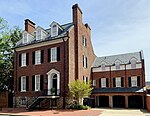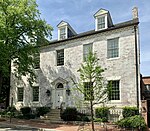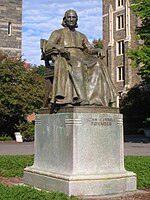Mortara Center For International Studies

The Mortara Center for International Studies is an academic research center at Georgetown University in Washington, DC. As part of Georgetown's Edmund A. Walsh School of Foreign Service, the Mortara Center organizes and co-sponsors lectures, seminars, and conferences and provides support for research and publications on international affairs. The current Director of the Mortara Center is Professor and Chair of the Georgetown University International Theory and Research Seminar (GUITARS) Abraham L. Newman. Past Directors include Kathleen R. McNamara, John McNeill, Carol Lancaster, Charles Kupchan, and John Ikenberry. Former United States Secretary of State Madeleine Albright is the Michael and Virginia Mortara Distinguished Professor in the Practice of Diplomacy. The Mortara Center was established through a gift from the Michael and Virginia Mortara Foundation.
Excerpt from the Wikipedia article Mortara Center For International Studies (License: CC BY-SA 3.0, Authors, Images).Mortara Center For International Studies
N Street Northwest, Washington Georgetown
Geographical coordinates (GPS) Address Nearby Places Show on map
Geographical coordinates (GPS)
| Latitude | Longitude |
|---|---|
| N 38.906555555556 ° | E -77.0705 ° |
Address
Mortara Building
N Street Northwest
20007 Washington, Georgetown
District of Columbia, United States
Open on Google Maps









